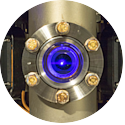Research Opportunities

We are excited about the many possibilities offered by our new system. If you share our enthusiasm and would like to work on cutting-edge atomic physics in a world-class academic environment please do not hesitate to contact Sebastian Blatt.
Doctoral research
We are currently looking for multiple PhD candidates, preferrably with experience in atomic physics, laser optics, and electronics. We have open positions in multiple projects, ranging from Quantum Simulation, Quantum Computing, to Quantum Metrology.
If you are interested in learning more about the specific projects, please reach out to Sebastian Blatt.
Undergraduate research
We have many projects for undergraduate research at the Bachelor and Master level, involving optics, low-noise electronics, and precision mechanics.
Short-term undergraduate visitors requiring support for travel and accommodation are strongly encouraged to apply through a DAAD fellowship or their local university’s exchange program.
Literature
We often get asked about literature that incoming students should have read. Most of our work is hands-on and real-life lab skills cannot be learned by reading a book exclusively. Nevertheless, here are some good references on a variety of important subjects that you will benefit from.
Laser cooling & trapping
The basics of laser cooling and trapping of neutral atoms are well described in the “yellow book”. As a graduate student, you should probably own a copy of Laser Cooling and Trapping by Harold J. Metcalf (ISBN 978-0387987286).
Photonics
The basics of laser beams and optics are exhaustively covered in Fundamentals of Photonics by Saleh & Teich (ISBN 978-0471358329). A more compact book that includes most of the relevant topics is Quantum Electronics for Atomic Physics and Telecommunication by W. Nagourney (ISBN 978-0199665488).
Electronics
Being able to design, build, and test your own electronics is important for what we do. You cannot go wrong with the much-improved update to the classic The art of electronics, third edition by P. Horowitz & W. Hill (ISBN 978-0521809269). A more basic but still useful introduction to electronics is Practical electronics for inventors by P. Scherz (ISBN 978-1259587542). However, hand-soldering a few simple op-amp circuits is a much better preparation for lab work than just reading about bias currents.
Data analysis
As a student in the hard sciences, you absolutely must be able to use a computer to analyze and plot your data. Your undergraduate curriculum should have made you familiar with the basics of data and error analysis. Clearly you already know the contents of Data Reduction and Error Analysis for the Physical Sciences by Bevington & Robertson (ISBN 978-0071199261) by heart.
Basic math software
You are already proficient with your favorite tool to crunch these numbers, such as python|numpy|matplotlib, Mathematica, or Matlab. We prefer python, because it is open source and all of our lab’s custom software is written in it.